Ball of the Foot Pain
Pre-Dislocation Syndrome: [Causes, Symptoms & Best Home Treatment]
Pre-dislocation syndrome is 2nd toe pain that can lead to a #1) plantar plate injury or #2)hammer toe. It can result in crossover toes. Learn to FIX IT!
Table of Contents
Predislocation syndrome 2nd toe treatment video:
Predislocation syndrome treatment video summary:
🦶Do you have second toe capsulitis, a plantar plate injury, or a second toe hammertoe?🦶
- We have you covered with our second capsulitis taping treatment, second toe plantar plate treatment, and second toe hammertoe treatment guide!
- This can also be known as second toe predislocation syndrome.
- We will show you the best home treatment for this second toe capsulitis and second toe predislocation syndrome taping.
- Focus on 2nd toe exercises, second toe massage & 2nd toe stretches!
Metatarsal predislocation syndrome causes:
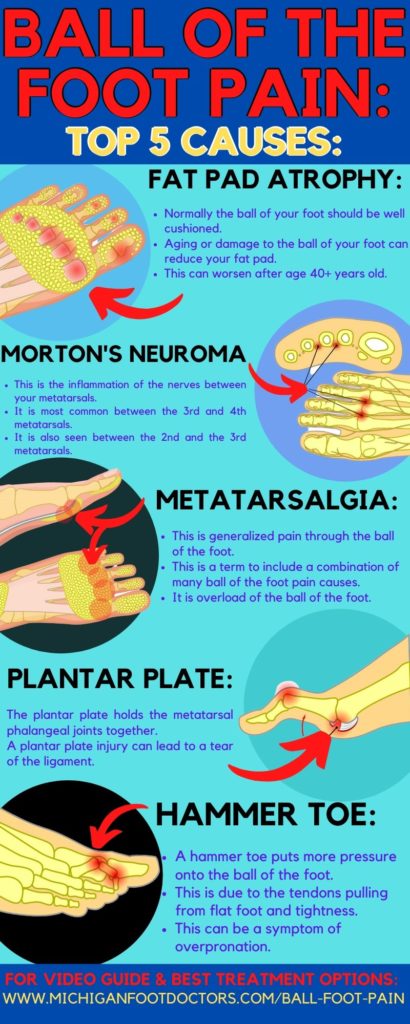
Ball of the Foot Pain Pictures & Photo Gallery:
Look:
- Metatarsalgia: which means generalized foot pain without a specific cause.
- Second toe capsulitis: this is the inflammation of the second toe joint capsule.
- Capsulitis is related to hammertoe formation, and can lead to a plantar plate tear. There is some overlap between these three disorders. As they get worse tearing and ligament damage can occur.
- Morton’s neuroma: this is the damage and inflammation to the nerves between and underneath the metatarsal joints.
- Fat pad atrophy of the ball of the foot: this is the loss of cushioning in the ball the foot.
- Plantar Plate Tear: A plantar plate tear is ripping of the ligaments holding the toe together.
So, click on the photo gallery to see the specific causes of your ball of the foot pain!
Click on the photo gallery to see the specific causes of your ball of the foot pain!
Predislocation syndrome second toe overview:
Pre dislocation syndrome is an isolated pain under the metatarsal phalangeal joints (MTPJs, the joints that form underneath the base of your little toes, not the actual toes themselves).
It can happen to any little toe, but it is almost always found affecting the second toe joint.
These are usually identified as “grape-like” swellings in the ball of your foot (due to swelling and bruising), but it’s normal to have almost no visual signs at all besides the pain in the joint.
Predislocation syndrome symptoms:
- The toe itself has an increased joint range of motion both up and down and side to side; this motion is accompanied by increased pain in the joint.
- There is usually no callus in the area, but there may be some swelling (“grape-like”).
- It is also not uncommon to have a non-reducible hammertoe, and if it does not look like a hammertoe yet, the proximal phalange will bend back over time, and the front of the toe will curve down like a claw.
- It will eventually become rigid and need surgery if left unaddressed.
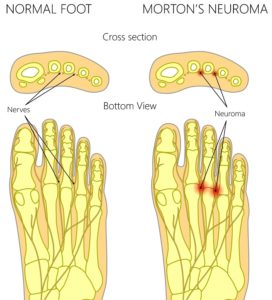
Predislocation syndrome of metatarsophalangeal joint risk factors:
- A bunion of the big toe usually accompanies Predislocation syndrome of the second toe.
- The second toe dislocates upward as the big toe drifts underneath it over time.
- It can also be caused by a short big toe leading to increased pressure on the second MTPJ.
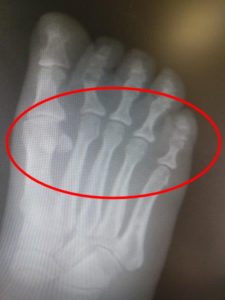
This is most common in people who have very tight hamstrings. Calf muscles are putting much more pressure on the ball the foot. This can lead to neuroma, metatarsal, or even stress fracture pain.
Predislocation syndrome foot causes:
- Skip this unless you really want to know– it is not essential for understanding your condition.
- The plantar plate is a thickening of the plantar capsule consisting of fibrocartilage and attaches into the proximal phalanx and between the condyles of the metatarsal neck (it attaches more strongly at the base of the proximal phalanx & it is weakest at the base of the metatarsal neck). Unfortunately, it almost always ruptures distally due to increased tension; this eventually destabilizes the MTPJ collateral ligaments and allows transverse motion. So this is how we get sagittal plan instability as well as transverse plane instability.
- Basically, predislocation syndrome is caused by excessive pressure on the base of that toe, a bunion under-riding the second toe, or perhaps even a short first ray.
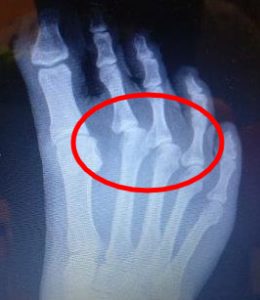
Predislocation syndrome toe diagnosis:
- It is important to rule out conditions such as Morton’s Neuralgia, Capsulitis, and Bursitis when considering predislocation syndrome.
- Morton’s Neuralgia is different because the pain is usually between the third and fourth metatarsal-phalangeal joints (rarely between two and three- but possible). If the pain is between the second and third metatarsals, it is more likely to be intermetatarsal bursitis than Morton’s Neuralgia.
- Capsulitis and Bursitis are usually found in the same area. They are more common, but you can differentiate predislocation syndrome by performing the Lachman test (aka the vertical drawer test) and checking the joint range of motion.
- The Lachman test stabilizes the metatarsal and attempts to slide the toe’s base dorsally (upward) and see if it dislocates by more than two millimeters; this motion should be painful if it is predislocation syndrome. Pain with joint range of motion will differentiate this condition from other pain in the ball of the foot, generally classified as metatarsalgia. Still, it will not differentiate it from arthritis (the 2mm dislocation will confirm it is not arthritis).
- Always compare both feet! If it is both feet, then this argues against predislocation syndrome!
- X-rays also need to rule out arthritis, malalignment, Freiberg’s infraction, fractures, or neoplasms.
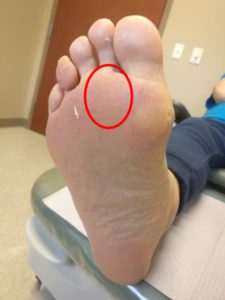
Predislocation syndrome home treatment:
- A podiatrist can help diagnose this further through history and physical and an injection to the ball of the foot to see if the pain goes away.
- An injection is generally not a first-line treatment for this problem.
- It can make the dislocation worse.
- Orthotics to relieve pressure from the bulb foot.
- They choose to relieve pressure from the bulb foot.
- Stretching and flexibility decreasing pressure from the bulb foot.
- Weight loss.
- Physical therapy to increase flexibility and remove pressure from the bulb foot.
- Massage therapy to leave the pressure and to swell to the ball foot.
- The most successful therapies include wearing good shoes and good orthotics.
- Good supportive slippers at home rather than walking barefoot.
Predislocation syndrome exercises:
We believe pre-dislocation syndrome exercises can be very effective. The goal of the exercises is to take pressure off the ball of the foot rather than doing exercises specifically on the second metatarsal phalangeal joint.
In the video above, we go over the detail on how to Take Care of your pre-dislocation syndrome exercises step-by-step.
Best shoes for predislocation syndrome:
We provide a link for the best shoes for the pre-dislocation syndrome.
These are our favorite podiatrist recommended shoes for the pre-dislocation syndrome.
Predislocation syndrome surgery:
Pre-dislocation syndrome is also known as a plantar plate tear.
- There are 4 different stages of plantar plate tear and pre-dislocation syndrome, so there are 4 different treatment options.
- This 2016 review article goes over the recommended treatment protocols for a predislocation syndrome injury.
- In the early stages of plantar plate tears, surgery may not be necessary.
- In grade 3 and grade 4 plantar plate tears, reconstruction surgeries may be necessary.
Click on this like to learn more about pre-dislocation syndrome surgery.
Predislocation syndrome surgery recovery time:
In most cases of pre-dislocation syndrome surgery, the recovery time has a wide range.
- In our office, we perform percutaneous hammertoe surgery that can result in very rapid healing.
- If you are interested in minimally invasive pre-dislocation syndrome, click on the sling for a no-obligation consult.
- Percutaneous surgery means no significant incisions are made. Thus the patient would be able to weight-bear almost immediately.
- After approximately 2-3 weeks, no further dressings or protection may be needed.
- In the traditional open surgery, this may follow with 1-2 weeks of non-weight-bearing combined with addressing that protects the site for about 2-3 weeks.
Thus the recovery time can range from 1-2 weeks all the way to 2-3 months.
Minimally invasive predislocation syndrome surgery:
We are big fans of minimally invasive hammertoe surgery.
- For those that qualify and are good candidates, weight-bearing and recovering time can be very rapid.
- This means you can start putting weight on your foot and moving around after the numbing agent wears off your toe.
Click for a no-obligation consultation with one of our podiatrists in Michigan!
Frequently Asked Questions?
What is predislocation syndrome?
Pre-dislocation syndrome is an injury to the plantar plate ligament.
- This is most common in the second metatarsal phalangeal joint and the third metatarsal phalangeal joint.
- However, it can happen to any of the 5 metatarsal-phalangeal joints.
- It is most common to have a pre-dislocation syndrome of the second toe because it is the longest toe.
- It is more common to get pre-dislocation syndrome while running as this puts even more pressure with higher strength on her second metatarsal phalangeal joint.
Can you get predislocation syndrome running:
Getting pre-dislocation syndrome while running is very common.
- We usually see pre-dislocation syndrome while running or while working heavy hours at a factory or on a floor for standing all day long.
- We commonly see this in runners, nurses, a factory worker is in people who stand on their feet all day.
How do you do predislocation syndrome taping?
In the pre-dislocation syndrome treatment video guide above, we go over exactly how to taping pre-dislocation syndrome.
- It is possible to do this with athletic tape, KT tape, or other types of tape.
- Specifically, it is possible to create a figure 8 type peace ribbon design to hold the second metatarsal phalangeal joint from dorsiflexing upper too far.
- Watch the video above for how to perform predislocation syndrome taping.
What causes predislocation syndrome?
Pre-dislocation syndrome is usually caused by too much pressure on the second metatarsal phalangeal joint.
- This leads to the pressure of the second metatarsal and the second digit.
- This overload can eventually stretch the plantar plate ligament.
Ball of the Foot Pain
